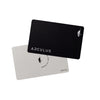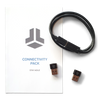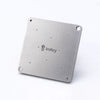
If you have explored the realm of bitcoin investments, you most certainly have several crypto wallets. This approach can be wise since it lets you divide your assets, lower risk, and maybe raise rewards. Managing several wallets, especially for those new to the field, can be a difficult chore though. It requires organization, great attention to detail, and some technical knowledge. These five basic ideas will enable you to properly handle several crypto wallets.
1. Streamline Your Wallets
Maintaining too many wallets is a typical mistake for crypto aficionados. Having several wallets might cause major management difficulties even if it helps to diversify assets. You run more danger losing private keys or forgetting passwords the more wallets you own. You might simplify your management by thinking about grouping your wallets. To learn more about cryptocurrency wallets, visit our site now!
Try to cut the wallet count to two or three only. This method simplifies management chores, increases control, and helps you better monitor your assets. You might combine by selling off some assets, moving money across wallets, or using a tool that combines several wallets onto one interface.
2. Diversify Wallet Types
You should utilize several wallet kinds to protect your assets even if you combine your wallets. Hardware wallets, software wallets, and paper wallets are the key varieties.
Physical objects providing the best degree of security are hardware wallets. Their offline storage of private keys renders them impervious to online dangers. Notable options include:
- Ledger Nano X: Known for its Bluetooth connectivity and robust Secure Element chip.
- Trezor Model T: Features a color touchscreen and advanced security features.
- BitBox02: Offers a straightforward interface with excellent user-friendliness.
Software wallets, or ‘hot wallets,’ are ideal for frequent transactions but are more vulnerable to online risks. Paper wallets involve writing private keys on paper, offering offline security.
Using a combination of hardware, software, and paper wallets provides both security and convenience. For instance, store long-term investments in hardware wallets and use software wallets for daily transactions.
3. Integrate Wallets on a Single Platform
Combining all your wallets on a single platform can significantly enhance your management efficiency. Many platforms offer the ability to manage multiple wallets and exchanges from one interface. This integration simplifies tracking and reduces the risk of losing private keys or forgetting passwords.
Particularly helpful are sites like Koinly, which track portfolios and provide crypto tax reporting. They simplify transaction analysis and asset management to offer a whole picture of your assets.
4. Fortify Security with Backups
Your crypto assets' security is absolutely essential. Should a wallet be lost or a password forgotten, backup your private keys, passwords, and recovery phrases to ensure you can retrieve your valuables.
Note recovery phrases, keep private keys in safe places, and apply backup services with encryption and two-factor authentication to improve security. DieFi is a top choice for securing digital assets and crypto data with high-grade protection.
5. Regularly Review Your Holdings
Regularly reviewing your crypto holdings is essential for effective management. Schedule monthly checks to monitor your wallets for any unusual activity or changes in your assets. This practice helps you identify potential threats and ensures your investments remain secure.
Although it can appear difficult, controlling several crypto wallets is essential for good crypto portfolio management. Consolidating your wallets, choosing different wallet kinds, and using strong backup plans will help you simplify your crypto handling and increase the security of your assets. Give your assets top priority and keep updated about industry trends to confidently negotiate the world of cryptocurrencies.



















































